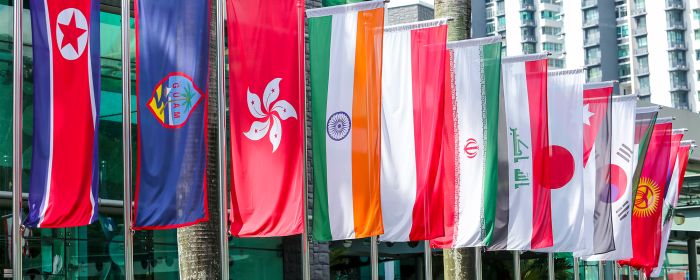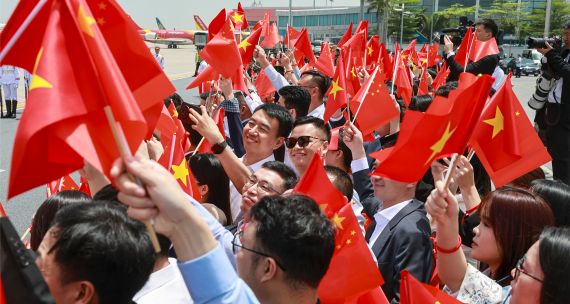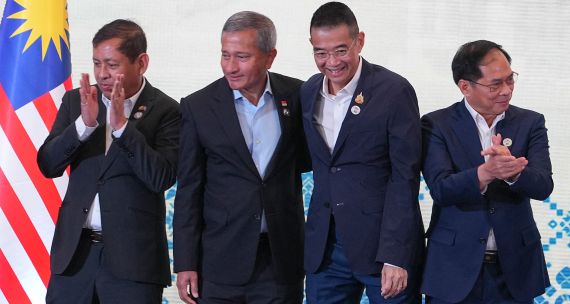Due to the proximity, interconnectedness, and density of its populated cities, Southeast Asia remains a hot spot for emerging infectious diseases. Previous outbreaks, such as SARS, H5N1, and H1N1, which spread throughout the region in the early 2000s, are cases in point. Southeast Asia is now better equipped to detect and respond to new diseases than it was. But building up regional capabilities and enhancing regional co-ordination to respond to future pandemics quickly remains high on the agenda for the Association of Southeast Asian Nations (ASEAN), the region’s leading intergovernmental organization.
ASEAN’s response to the SARS outbreak in 2003 earned it praise from international observers for contributing to the regional containment of the virus and for demonstrating that it could be more than just a “talk shop.” In the COVID-19 era, those same observers are now assessing ASEAN’s continuing role in curbing the spread of the virus in the 10 economies and the vast region it represents. This dispatch looks at how ASEAN, as a regional intergovernmental institution, has responded to the pandemic.
Jumping in early
Guided by the ASEAN Post-2015 Health Development Agenda (APHDA), the ASEAN Secretariat’s Health Division very early on leveraged various regional mechanisms to combat COVID-19. When the first report on the virus was delivered to the Health Division on January 3, 10 days before the first COVID-19 case was discovered in the region, the ASEAN Senior Officials’ Meeting on Health Development (ASOMHD), a core governing body responsible for the strategic management and implementation of the APHDA, activated a channel of communication to facilitate the exchange of information between ASEAN’s Health Division and ASEAN member countries. This channel allowed for health experts and officials from member countries to conduct a series of virtual meetings with the institution’s key dialogue partners for the next three months.
ASEAN hoped to pool resources and redistribute them to ASEAN members, especially those with less developed public health systems.On February 15, Vietnam, the ASEAN 2020 Chair, issued a statement on the response that ASEAN would carry out collectively to mitigate the threat of COVID-19 in the region and highlighted the importance of a co-ordinated response. Beginning on February 20, ASEAN health representatives held video conferences regularly with Chinese health experts to learn from China’s experience. On March 13, the ASOMHD conducted a virtual meeting to discuss updates, capacity needs, and gaps related to the national responses of ASEAN members. But the most important meetings were the Special ASEAN Summit, which brought together heads of states from the 10 member countries, and the ASEAN+3 Summit, which included leaders from China, Japan, and South Korea. Both meetings were held virtually on April 14. An important outcome of these two summits was the creation of a COVID-19 Response Fund to support preventive efforts such as procuring medical supplies and equipment for frontline response in member states.
While the Response Fund was to be sourced from the ASEAN Development Fund and other co-operative partner funds, the details of the exact funding amount and its final implementation remain vague. With the Fund, ASEAN hoped to pool resources and redistribute them to ASEAN members, especially those with less developed public health systems.
Falling short of expectations
ASEAN’s efforts to deliver a collective response are undeniable and deserve acknowledgement. But the slow and patchy regional response to COVID-19 has raised new questions around ASEAN relevance in dealing with a global issue like a pandemic. Despite ASEAN’s haste and determination, the numerous meetings and summits did not yield a cohesive and collective response to COVID-19, but instead a patchwork of actions. And the most important meetings, the ASEAN Summit and ASEAN+3 Summit on COVID-19 were not held until April 14, more than one month after the WHO declared COVID-19 a pandemic.
It became both too late and too burdensome to establish an effective task force, and it never materialized.Another shortcoming in ASEAN’s pandemic response was its failure to create a Task Force on COVID-19 to lead response efforts, something it did successfully with the Task Force on Highly Pathogenic Avian Influenza during the 2008 H5N1 outbreak.
The President of Indonesia did raise the idea of creating a task force with China, Japan, and South Korea. But by the time the summits were convened on April 14 and given the chaotic domestic circumstances of many member states since, it became both too late and too burdensome to establish an effective task force, and it never materialized.
The bloc was also stymied in its pandemic efforts due to specific domestic issues among some of its member states. Examples include Cambodia’s erosion of freedoms and power-grabbing through the controversial state of emergency law, Indonesia’s tardy response, and Singapore’s upended containment success. In the shadow of these issues, combined with the visible success and failure stories of some of its high-profile members, ASEAN’s broader efforts have been rendered somewhat invisible.
Facing challenges ahead
The COVID-19 pandemic has surely cast ASEAN’s 2020 theme of ‘Cohesive and Responsive’ in a new light. The regional bloc will face significant pressure to restore confidence in its institutional vitality in the post-pandemic world. ASEAN has not been able to act swiftly in the current crisis as it encountered too many roadblocks to effectiveness, and may find similar challenges ahead.
Certainly, ASEAN’s role as a regional institution shouldn’t supplant the national actions and policies of its members, but there are areas where improvements could be made.
This response plan could provide detailed steps to be taken for different pandemic scenarios, outline how resources could be best pooled, and identify one specific, central ASEAN agency to lead and delegate.ASEAN needs to conduct a thorough evaluation of its collective COVID-19 response and examine how it might transform its existing regional mechanisms to better respond to future pandemics. In 2017, the bloc developed a comprehensive ASEAN Joint Disaster Response Plan providing a common framework to deliver an ASEAN response based on different natural disaster scenarios. A similar approach could be adopted for pandemics vis-à-vis an ASEAN Joint Pandemic Response Plan. This response plan could provide detailed steps to be taken for different pandemic scenarios, outline how resources could be best pooled, and identify one specific, central ASEAN agency to lead and delegate. ASEAN could also re-activate the now-inactive ASEAN Technical Working Group on Pandemic Preparedness and Response, formed in 2008 to promote planning and co-ordination in pandemic preparedness and response, to carry out the process of drafting the ASEAN Joint Pandemic Response Plan.
ASEAN should collaborate with dialogue partners in these endeavours. Canada has long been a dialogue partner of ASEAN, supporting the initiatives conducted by the ASEAN Emergency Operations Centre Network and ASEAN Bangkok Venture Club as part of Canada’s Global Partnership Program. Given Canada’s long-standing assistance to ASEAN’s Health Division in addressing health security threats, Ottawa could be an ideal partner for renewed co-operation with the regional organization to draft a renewed ASEAN Joint Pandemic Response Plan. This collaboration could help raise Canada’s profile within ASEAN and boost Canada’s involvement in addressing security concerns throughout the region.





